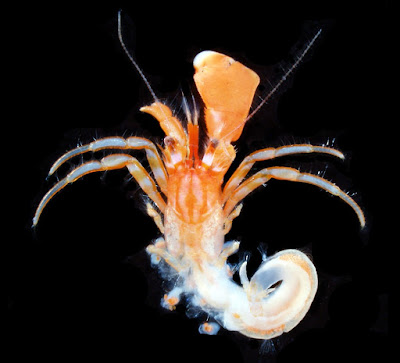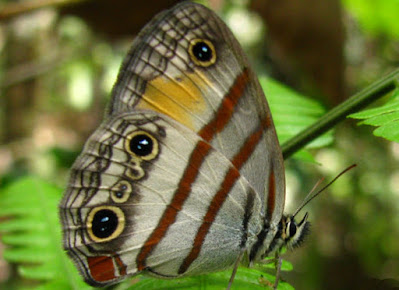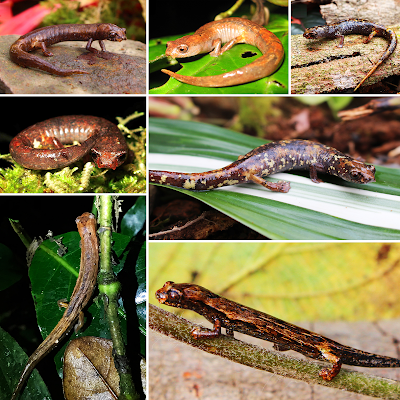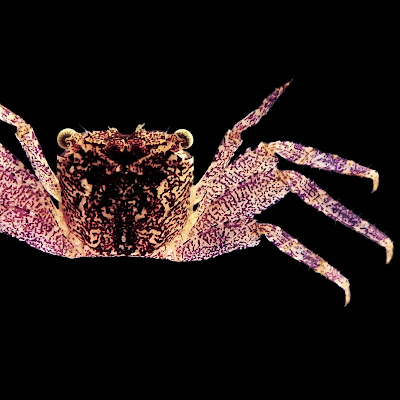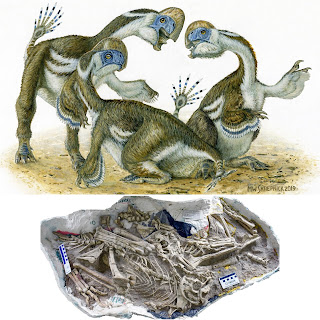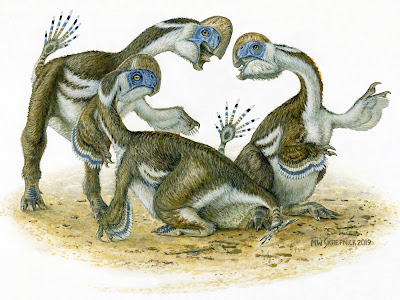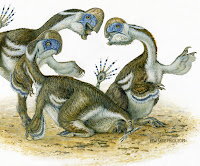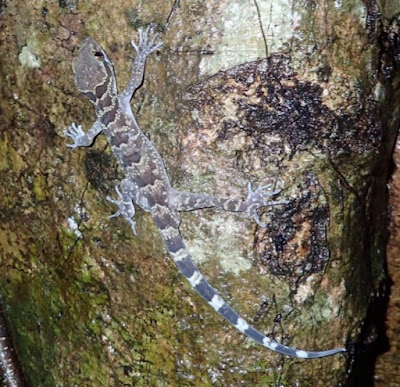[Most Recent Entries] [Calendar View]
Wednesday, October 7th, 2020
| Time | Event | ||||
| 1:46p | [Crustacea • 2020] Kumepagurus kaikata (Decapoda: Anomura: Paguroidea) • A New Species of Pagurid Hermit Crab assigned to the Genus Kumepagurus Komai & Osawa, 2012 from the Kaikata Seamount, Izu-Ogasawara Arc, Japan
Abstract A new pagurid hermit crab species is assigned to the genus Kumepagurus Komai & Osawa, 2012, previously represented only by the type species, K. cavernicolus Komai & Osawa, 2012, known only from a marine cave on Ryukyu Islands, northwestern Pacific. The assignment is made because of the lack of an accessory tooth on the maxilliped 3 ischium, the operculiform right chela, the presence of two distal corneous claws on the left chela fixed finger, the simple pereopods 4 and the development and structure of the male sexual tubes on both coxae of pereopods 5, all characteristic to the type species of the genus. However, in contrast to K. cavernicolus, K. kaikata n. sp. lacks pleurobranchs on the thoracomeres 5 and 6, and in this regard, Kumepagurus is unusual in the family Paguridae. The generic diagnosis of Kumepagurus is emended to accommodate the new species, which is readily distinguished from K. cavernicolus by the proportionately shorter antennular and antennal peduncles and the right cheliped structure and ornamentation, in addition to the difference in the gill number. Keywords: Crustacea, gill number, Kumepagurus kaikata, northwestern Pacific Tomoyuki Komai. 2020. A New Species of Pagurid Hermit Crab assigned to the Genus Kumepagurus Komai & Osawa, 2012 (Decapoda: Anomura: Paguroidea) from the Kaikata Seamount, Izu-Ogasawara Arc, Japan. Zootaxa. 4858(2); 241–250. DOI: 10.11646/zootaxa.4858.2.5 | ||||
| 2:01p | [Entomology • 2020] Revalidation of Vareuptychia Forster, 1964, Description of Vanima gen. nov., and notes on Euptychia cleophes Godman & Salvin, 1889 (Lepidoptera: Nymphalidae: Satyrinae)
Abstract Vareuptychia Forster, 1964 stat. rest. is revalidated and comprises two species, V. similis (Butler, 1867) comb. rest. and V. themis (Butler, 1867) comb. nov. Vanima Zacca, Casagrande & Mielke gen. nov. is described to contain Euptychia labe Butler, 1870 (the type species), E. palladia Butler, 1867 and E. lesbia Staudinger, [1886]. The taxonomy of these two genera was initially revised based on morphological and distributional data, and subsequently tested and supported with a Maximum Likelihood analysis using four genes (COI, GAPDH, RpS5 and EF1-a). Lectotypes are designated for Euptychia similis Butler, 1867, E. themis Butler, 1867, E. undina Butler, 1870 and E. lesbia Staudinger, [1886]. No DNA sequences were obtained for Euptychia cleophes Godman & Salvin, 1889 but its transfer to Megisto Hübner, [1819] is supported by morphological evidence. For all taxa treated in this study, a taxonomic catalog, diagnosis, (re)description and illustrations of adults, venation and genitalia are provided, as well as comments on intraspecific variation, sexual dichromatism, ecology and distribution maps. Keywords: Lepidoptera, Amazon rainforest, Central America, Cissia, dry forests, Euptychiina, integrative taxonomy, Megisto, phylogeny Thamara Zacca, Mirna M. Casagrande, Olaf H. H. Mielke, Blanca Huertas, Marianne Espeland, André V. L. Freitas, Keith R. Willmott, Shinichi Nakahara and Gerardo Lamas. 2020. Revalidation of Vareuptychia Forster, 1964, Description of Vanima gen. nov., and notes on Euptychia cleophes Godman & Salvin, 1889 (Lepidoptera: Nymphalidae: Satyrinae). Zootaxa. 4858(1); 1–34. DOI: 10.11646/zootaxa.4858.1.1 | ||||
| 2:10p | [Herpetology • 2020] Distribution, Habitat Suitability, Conservation State and Natural History of Endangered Salamander Bolitoglossa pandi (Caudata: Plethodontidae)
Abstract Background: Pandi’s mushroom-tongue salamander (Bolitoglossa pandi) is one of the threatened amphibians in South America, as well as a flagship species for the Colombian conservation agenda. This species is endemic to the Andean cloud forests of the western slope of the Cordillera Oriental of Colombia, occurring only in the department of Cundinamarca within a narrow elevational range. At night, B. pandi can be seen perching on the upper side of leaves at heights ranging from ground level to 2.5 m. During the day, it can be found under leaf litter or cover objects. Few studies have provided relevant information that can help the Colombian government to formulate lines of action for the conservation of this species; consequently, its threat assessments so far have been based on very limited information. Methods: We conducted surveys for salamanders in four municipalities of Cundinamarca, Colombia, using two approaches: visual encounter surveys (Guaduas and Villeta) and the basic sampling protocol for single-species occupancy modeling (Supatá and Venecia). Multivariate analyses were employed to explore the correlation between habitat structure and natural history traits, abundance, and detection/non-detection of B. pandi. We evaluated the B. pandi activity pattern through kernel density curves for each sampling occasion and explored the variability of salamander abundance during their activity period by performing a nested ANOVA. Results: We report the discovery of two new populations of B. pandi, which represent the most northwestern records known. A significant correlation between body length, body mass, and habitat structure was observed. Multivariate analyses indicated that leaf litter depth, mean temperature, percent vegetation cover, and altitude were the habitat variables that together explained 60.3% of the B. pandi abundance variability, as well as the main determinants of its optimal habitat. Bolitoglossa pandi exhibits an activity pattern characterized by two main activity peaks, in which niche time-partitioning was observed. Across the surveyed area, we found a healthy, stable, highly dense population of B. pandi (>1,300 individuals), with seasonal variability between development stages. Discussion: Given the high habitat specificity of B. pandi, the species is highly vulnerable to local changes. Thus, we recommend that B. pandi be retained as Endangered (EN) on the IUCN Red List, based on the IUCN Criterion B, given its restricted extent of occurrence (ca. 2,500 km2) and the ongoing threats from agriculture, cattle ranching, logging, and urban development, which continue to reduce its suitable habitat. Teddy Angarita-Sierra, M. Argenis Bonilla-Gómez, David A. Sánchez, Andres R. Acosta-Galvis, Hefzi Medina-Ovalle, Anggi Solano-Moreno, Simon Ulloa-Rengifo, Daniela Guevara-Guevara, Juan J. Torres-Ramirez, Sebastián Curaca-Fierro, Diego M. Cabrera-Amaya, Jhon A. Infante-Betancour, Luisa F. Londoño-Montaño, Diana X. Albarán-Montoya and Lesly R. Peña-Baez. 2020. Distribution, Habitat Suitability, Conservation State and Natural History of Endangered Salamander Bolitoglossa pandi. PeerJ. 8:e9901. DOI: 10.7717/peerj.9901 | ||||
| 2:19p | [Crustacea • 2020] Leptarma biju • A New Tree-spider Crab of the Genus Leptarma (Brachyura, Sesarmidae) from Mangroves in Kerala, India Abstract A new species of long-legged sesarmid crab of the Leptarma leptosoma (Hilgendorf, 1869) species-group is described from mangroves in south-western India. In the general carapace features as well as in the proportions of the long ambulatory legs, Leptarma biju n. sp. is most similar to L. gracilipes (Li, Rahayu & Ng, 2018), from eastern Indonesia and Papua New Guinea, but can easily be distinguished by the structure of the gonopods as well as the leg proportions. Keywords: Taxonomy; new species; sesarmid crab; Leptarma leptosoma species-group; Indian Ocean Peter K. L. Ng and Suvarna S. Devi. 2020. A New Tree-spider Crab of the Genus Leptarma (Brachyura, Sesarmidae) from Mangroves in Kerala, India. Crustaceana. 93(7); 759–768. DOI: 10.1163/15685403-bja10030 | ||||
| 2:32p | [Botany • 2020] Vickia rotundifolia • Vickia, A New Genus of Tribe Gochnatieae (Compositae)
Abstract The tribe Gochnatieae is restricted to America. A recent molecular study including over 60% of the species of the tribe was carried out to untangle evolutionary relationships among the taxa. Eight supported clades were recovered as monophyletic genera, while Gochnatia s.l. was revealed as paraphyletic and currently restricted to the Central Andes. Gochnatia rotundifolia was not included in this phylogeny since extracted DNA from few and old collections from Brazil was unusuable. Since Cabrera's treatment of Gochnatia s.l., this species has received special attention due to its distinct morphological characters when compared with the other monophyletic genera of Gochnatieae. Therefore, this paper aims to provide new evidence that supports Gochnatia rotundifolia to be described as a separate monospecific genus based on a morphological study and a maximum parsimony (MP) analysis. A total of 21 species were studied. The leaf venation was analysed using digital X‐ray capture (VIVA–Varian Image viewing & Aquisition). Seventeen morphological characters obtained from vegetative and floral parts of the plants were included in the data matrix. Our results reinforce the placement of Gochnatia rotundifolia within the tribe Gochnatieae. Gochnatia rotundifolia is consistently recovered in a clade as sister to the Cnicothamnus‐Richterago group. The species differs from the other genera of the tribe by an actinodromous basal leaf venation with three primary veins, and pappus elements composed by (50–)60–75 bristles, sometimes almost flat setae, arranged in 2 or 3 series, unequal in length. Our results support Gochnatia rotundifolia as the sole species Vickia rotundifolia comb. nov. in a new genus of Gochnatieae, Vickia gen. nov. The new genus is described, illustrated, and a generic identification key for the tribe Gochnatieae is provided. Keywords: Asteraceae, Brazil, morphology, neotype new combination
Vickia Roque & G.Sancho, gen. nov. ≡ Gochnatia sect. Rotundifolia S.E.Freire, Katinas & G.Sancho in Ann. Missouri Bot. Gard. 89: 550. 2002, p.p. (excl. Gochnatia angustifolia G.Sancho, S.E.Freire & Katinas), syn. nov. Nádia Roque and Gisela Sancho. 2020. Vickia, a new genus of tribe Gochnatieae (Compositae). TAXON. DOI: 10.1002/tax.12283 Vicki A. Funk, et a., 2014. A phylogeny of the Gochnatieae: Understanding a critically placed tribe in the Compositae. Taxon 63(4). DOI: 10.12705/634.27 | ||||
| 2:57p | [Paleontology • 2020] Oksoko avarsan • A New Two-fingered Dinosaur sheds light on the Radiation of Oviraptorosauria
Abstract Late Cretaceous trends in Asian dinosaur diversity are poorly understood, but recent discoveries have documented a radiation of oviraptorosaur theropods in China and Mongolia. However, little work has addressed the factors that facilitated this diversification. A new oviraptorid from the Late Cretaceous of Mongolia sheds light on the evolution of the forelimb, which appears to have played a role in the radiation of oviraptorosaurs. Surprisingly, the reduced arm has only two functional digits, highlighting a previously unrecognized occurrence of digit loss in theropods. Phylogenetic analysis shows that the onset of this reduction coincides with the radiation of heyuannine oviraptorids, following dispersal from southern China into the Gobi region. This suggests expansion into a new niche in the Gobi region, which relied less on the elongate, grasping forelimbs inherited by oviraptorosaurs. Variation in forelimb length and manus morphology provides another example of niche partitioning in oviraptorosaurs, which may have made possible their incredible diversity in the latest Cretaceous of Asia. Keywords: forelimb evolution, Theropoda, Late Cretaceous, Oviraptoridae, digit reduction
Theropoda Marsh 1881 Oviraptorosauria Barsbold 1976 Oviraptoridae Barsbold 1976 Heyuanninae (=Ingeniinae) Barsbold 1981 Oksoko avarsan gen. et sp. nov. Diagnosis. Oksoko avarsan is a small oviraptorid oviraptorosaur distinguished from other oviraptorosaurs by the following suite of autapomorphies (*) and other characters: apically thickened, dome-shaped cranial crest composed equally of nasals and frontals (figure 2)*; nasal recesses housed in a depression; postorbital with dorsally directed frontal process; cervical vertebrae with large epipophyses; functionally didactyl manus (figure 3)*; accessory ridge of brevis fossa of ilium*; anteriorly curving pubis; and large proximodorsal process of distal tarsal IV. Etymology. Oksoko (pronounced ‘Oak-soak-oh') from the three-headed eagle of Altaic mythology, in reference to the fact that the holotype assemblage preserves three skulls; the specific name avarsan is from the Mongolian word ‘аварсан' (avarsan: rescued), reflecting their confiscation from poachers and/or smugglers. Holotype. Institute of Paleontology, Mongolia (MPC-D) 102/110a, a nearly complete juvenile skeleton missing only the distal half of the tail (figures 1–3), preserved in an assemblage of four individuals. Referred specimens. MPC-D 100/33, partial subadult postcranial skeleton; MPC-D 102/11, partial juvenile skeleton with skull; MPC-D 102/12, adult postcranial skeleton; MPC-D 102/110b, nearly complete juvenile skeleton; MPC-D 102/110c, partial juvenile postcranial skeleton (figures 1–3). Localities and Horizon. Bugiin Tsav and Guriliin Tsav, Nemegt Basin. Nemegt Formation (lower Maastrichtian). Gregory F. Funston, Tsogtbaatar Chinzorig, Khishigjav Tsogtbaatar, Yoshitsugu Kobayashi, Corwin Sullivan and Philip J. Currie. 2020. A New Two-fingered Dinosaur Sheds Light on the Radiation of Oviraptorosauria. Royal Society Open Science. DOI: 10.1098/rsos.201184 Newly Discovered Toothless, Two-Fingered Dinosaur’s Lost Digits Point to Spread of Parrot-Like Species | ||||
| 3:07p | [Herpetology • 2020] Cyrtodactylus maelanoi • A New Species of Cyrtodactylus Gray (Squamata; Gekkonidae) from the Thai Highlands with A Discussion on the Evolution of Habitat Preference
Abstract A new gekkonid lizard, Cyrtodactylus maelanoi sp. nov., from Mae Hong Son Province of the Thai Highlands is described using an integrative taxonomic analysis based on morphology, color pattern, and the mitochondrial gene NADH dehydrogenase subunit 2 (ND2) and its flanking tRNAs. Phylogenetic analyses place the new species within clade 1 of the C. sinyineensis group and as the sister species to C. inthanon with an uncorrected pairwise sequence divergence of 3.9%. Collection data gathered in the field indicate that C. maelanoi sp. nov. is a habitat generalist. Reconstruction of the ancestral habitat preference for the C. sinyineensis group by way of stochasitc character mapping (SCM) indicates that karstic environments were the ancestral condition out of which the general habitat preference of the ancestor of C. maelanoi sp. nov. and C. inthanon and that of C. amphipetreaus and C. doisuthep evolved three times independently. Additionally, SCM demonstrated that the evolution of a granitic habitat preference from a karst-adapted ancestor happened in C. aequalis. The discovery of a new upland species in the Thai Highlands brings into focus the understudied nature of the mountain systems of western Thailand and the need for their continued exploration and conservation. Keywords: Reptilia, Integrative taxonomy; Thailand; gecko; stochastic mapping, ecology, conservation
Cyrtodactylus maelanoi sp. nov. Mae La Noi Bent-toed Gecko Distribution. Cyrtodactylus maelanoi sp. nov. is known only from the type locality from ..., Mae La Noi District, Mae Hong Son Province, Thailand (...; 991 m in elevation). Etymology. The specific epithet “maelanoi” is a toponym of the type locality Mae La Noi. The recommended vernacular name in English is Mae La Noi Bent-toed Gecko L. Lee Grismer, Attapol Rujiranwan, Korkhwan Termprayoon, Natee Ampai, Siriporn Yodthong, Perry L. Jr. Wood, Jamie R. Oaks and Anchalee Aowphol. 2020. A New Species of Cyrtodactylus Gray (Squamata; Gekkonidae) from the Thai Highlands with A Discussion on the Evolution of Habitat Preference. Zootaxa. 4852(4); 401–427. DOI: 10.11646/zootaxa.4852.4.1 A new species of Bent-toed Gecko from the Thailand |
| << Previous Day |
2020/10/07 [Calendar] |
Next Day >> |
